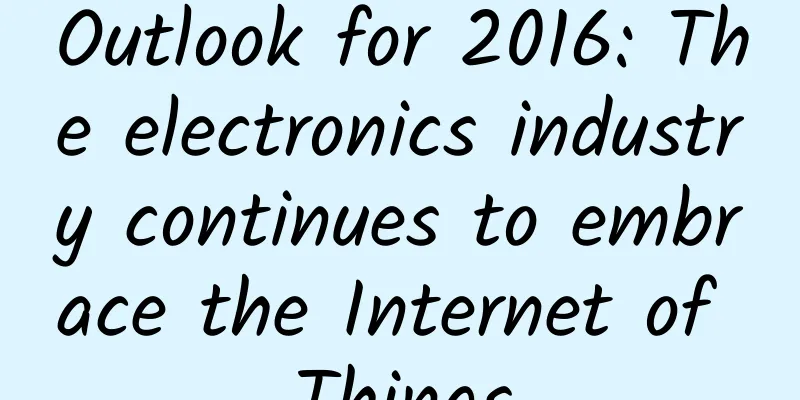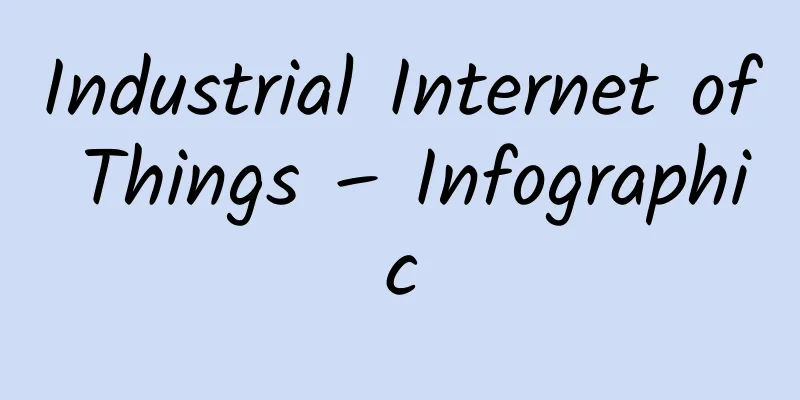Outlook for 2016: The electronics industry continues to embrace the Internet of Things

|
Time flies, and a new year has arrived. The electronics-related industries continue to pursue new market opportunities in order to deliver outstanding results in the "not so good" economic environment. Looking ahead to 2016, from the forecasts made by various market research units, the application market that affects the entire electronics-related industry is still the Internet of Things (IoT). According to Gartner's latest technology report, among the major technology trends in 2016, the information processing and analysis derived from the Internet of Things and the Internet of Everything will make the Internet of Things more "real", so not only will the IoT devices and communication technologies evolve again, but the IoT platform that integrates and processes huge amounts of data will be the focus of development in the new year. Gartner also stated that the IoT platform strengthens the network application and service structure. The integration of management, security and other technologies, as well as the standards of the IoT platform, are the most basic elements for building, managing and protecting the IoT. It can be said that the IoT is a component of the digital grid, and the environmental experience and the emerging and active IoT platform are the main elements for realizing the IoT. Therefore, in 2016 and even in the future, any enterprise embracing the IoT needs to develop an IoT platform. Market research firm TrendForce also believes that the Internet of Things will still provide a huge business opportunity in 2016, waiting to be tapped by industry players. With the rise of key technologies and mobile devices, mobile and wireless networks, the development and application of the Internet of Things in the market will grow rapidly, from the smart home that has gradually developed in recent years to the highly-anticipated Industry 4.0 and smart cities, all of which are practical areas of the Internet of Things. Among them, the application service layer in the Internet of Things architecture, such as medical care, retail, logistics, transportation and other professional vertical fields, will account for 70% of the total revenue of the Internet of Things. TrendForce Research Institute (TRI) also pointed out that in order to obtain IoT business opportunities, companies should focus on application services, emphasize deepening vertical fields and cross-industry alliances, and come up with innovative services. It is worth noting that in addition to relying on the efforts of existing companies, more and more makers are also joining in, making the market more active. The IoT not only drives the improvement of production efficiency or the reduction of costs, but also focuses on the development of people-oriented, value enhancement and sharing. Three major application areas of the Internet of Things in 2016 The Internet of Things is still attracting much attention in 2016. However, since the scope of the Internet of Things is quite broad, which application areas should electronics-related companies focus on? Ericsson's Vice President of New Business and Business Development Zhou Daqi said that transportation, public utilities and smart homes will be the fastest growing areas for the application of the Internet of Things. Currently, Volvo and Taiwan's U-Ming Marine have begun to introduce IoT technology to improve driving safety and more effectively manage fleets. Zhou Daqi pointed out that one of the reasons why the transportation field will quickly introduce IoT is safety. For any transportation company, safety maintenance is the biggest issue, followed by transportation efficiency and cost. After the introduction of IoT, ordinary private cars can reduce the occurrence of accidents through vehicle-to-vehicle communication (V2V) or vehicle-to-road infrastructure communication (V2I): and the introduction of IoT technology by fleets or fleets can collect or track information on transportation vehicles and ships in real time, so that if an accident occurs, it can be known at the first time, and if there are any emergencies in the direction of navigation, they can be avoided in advance. Not only that, the introduction of IoT technology in the transportation industry can also effectively save fuel, improve management and transportation efficiency, and further reduce costs. In terms of smart home, although it has been developed for several years, with the increasing demand of consumers for convenience and safety in family life, smart home will develop more strongly with the support of Internet of Things technology. Public utilities include smart water and electricity meters, smart cities, etc. Zhou Daqi believes that with the strong promotion of governments of various countries, the development of smart cities will become more and more complete. However, what the industry should pay more attention to is that if they can master or further enter the field of IoT data analysis, they will be able to grasp more IoT business opportunities. The IDC report pointed out that in 2020, the IoT business opportunities in Asia Pacific alone will reach US$583 billion, and the huge amount of data generated by IoT applications is even more impressive. Miniaturization becomes the biggest challenge for semiconductors In response to the development trend of the Internet of Things in 2016, the semiconductor chip industry also needs to "keep pace with the times". In 2016, the scale of the Internet of Things will be even larger, and more so-called Internet of Things devices will enter the market. The miniaturization and longer battery life required by Internet of Things devices have led the semiconductor industry to respond by miniaturizing chips. It is expected that the research and development of smaller advanced processes such as 10nm and 7nm will continue, and the demand for chips from new IoT devices is expected to usher in a "spring boom" for semiconductor fields such as equipment, packaging, and foundry/manufacturing in 2016. 5G is developing steadily The impact of the Internet of Things on communication technology is nothing more than supporting more devices to access the Internet at the same time without reducing the transmission speed and being stable. For this reason, the existing 3G is no longer sufficient, and 4G Long Range Evolution (LTE) or LTE-Advanced is also working to meet the communication needs of the Internet of Things world through many methods and in combination with wireless local area networks (Wi-Fi). Gartner and other market research institutions believe that 5G technology, which is in the initial stage of development, can be said to be tailor-made for IoT applications. Gartner said that many new technical specifications of 5G, including 32×32 or 64×64 multiple input multiple output (MIMO), each antenna can perform beamforming (Beamforming) and greater network coverage, are all developed to cope with the huge number of connected devices in the IoT. Therefore, in 2016, the investment of related industries in 5G communication technology is expected to increase again. Next step - establishment of IoT standards The Internet of Things (IoT) issue continued to ferment in 2016, and the electronics-related industries will inevitably pay attention to the next step in the long-term sustainable development of the IoT. Zhou Daqi believes that standardization will be an important issue in the next stage of the IoT challenge. With common standards, IoT applications can solve interoperability problems and further expand the market. However, he also admitted that it is still unknown whether a unified IoT standard will appear in 2016, but at this stage, some manufacturers have begun to promote it, hoping to achieve the effect of setting an example. To eliminate the interoperability problem of the Internet of Things, Ericsson provides a SaaS solution - Device Connection Platform (EDCP). Zhou Daqi pointed out that IoT devices can access the mobile network directly or through a gateway, and the devices will communicate with each other as part of the end-to-end machine-to-machine (M2M) system, and communicate with individuals and central control systems to transmit data. However, if the devices or network data platforms are not interoperable, people will not be able to enjoy the convenience brought by the Internet of Things. Therefore, Ericsson EDCP provides a standard platform for IoT-related developers, which can not only quickly develop their products, but also can be further smoothly interfaced with other platforms developed using the EDCP architecture. Currently, telecom operators including Deutsche Telekom, France Telecom (now renamed Orange) and Sweden's TeliaSonera have formed the GMA alliance to provide services using the EDCP platform. Zhou Daqi emphasized that although EDC has not yet become a global IoT common standard, as more and more companies join and jointly promote it, EDCP will gain more "support." Enterprise transformation is inevitable The Internet of Things will not only change people's lives and affect the electronics, semiconductor and other related industries, but will also cause companies that have invested or not invested in the development of the Internet of Things to begin to transform themselves. Adrian De Luca, Chief Technology Officer of Hitachi Data Systems (HDS), a wholly owned subsidiary of Hitachi, said that as the trend of IoT applications spreads to enterprises, enterprises will strive to improve important technical and non-technical departments in 2016 to accelerate digital transformation. Liang Wanyu, senior technical consultant of Hitachi Data Systems, added that the development of IT and enterprises in Asia Pacific in 2016 will be affected by five major factors, including digital transformation, smart cities, cross-modal IT, multi-cloud and talent shortage. Among them, the impact of the Internet of Things is that due to the economic benefits brought by digital channels, enterprises are moving towards digital transformation and smart cities. Liang Wanyu said that according to the Gartner CIO Agenda Insights report, only 16% of corporate information chiefs (CIOs) last year affirmed the revenue potential of digital channels, such as online payments, etc., but this year this number has grown to 37%, proving that not only CIOs are promoting digitalization plans, but also various departments of enterprises have begun to build their own platforms. On the other hand, the chief operating officer (CMO) no longer requires the IT department to build a system, but directly purchases platform-as-a-service solutions from suppliers, and no longer passively waits for manufacturers or competitors to develop new platforms, but actively destroys and builds new systems. Smart cities, one of the applications of the Internet of Things, have brought about changes to enterprises, which means that enterprises also have more opportunities to participate in public project investments. Liang Wanyu explained that the development of smart cities in the Asia-Pacific region is quite fast, from public safety to transportation. Many countries have launched smart city projects for various issues. However, not many governments have the experience or financial resources to plan and implement these projects. Therefore, the government cooperates with major companies that have invested heavily in the Internet of Things to further develop solutions for smart cities by integrating their existing intellectual property and combining the ecosystem of technology suppliers. In 2016, as governments around the world launched various smart city initiatives, such as Digital India, Smart Singapore and Digital China, transformed smart companies will be the catalyst for the realization of smart cities. Navigant Research estimates that annual technology investment in smart cities will grow fourfold to $11.3 billion by 2023. Development of Internet of Things in Taiwan in 2016 In 2016, while countries and manufacturers continue to seize IoT business opportunities, how is Taiwan's development? Zhou Daqi believes that from the perspective of the three major IoT application markets, the Taiwanese government and manufacturers still need to work harder. The reason is that Taiwanese consumers attach more importance to privacy rights than the convenience of smart homes. Therefore, although Taiwan's smart homes have been promoted by companies such as security or telecommunications companies, the progress is still slow. Public utilities and transportation require more government support. In fact, after Taiwan's U-Ming Shipping took the lead in introducing the Internet of Things, it is expected that other transportation companies in Taiwan will follow suit; however, the public utilities sector still needs the leadership of the Taiwan government to achieve more significant development. |
<<: Tech keywords for 2016: layoffs, VR/AR, IoT
>>: ZIVOO intends to build the smart home 3.0 era with the help of smart gateway
Recommend
He is determined to climb Mount Everest even without legs. He is the first torchbearer for the Paralympics!
March 2 Beijing 2022 Paralympic Winter Games Torc...
Cell Breakthrough: This newly developed diet produces immediate results in 3 weeks!
Compiled by: Gong Zixin Industrial diet High in p...
2018Q3 Wedding Photography Industry Advertising Report, Which Information Flow Ads Are More Popular?
As my country's economy is performing well ov...
Alipay's "Collect Five Blessings" officially announced: There are two new ways to play in 2020
The annual Five Blessings Collection is finally h...
Volkswagen has spent $17.5 billion in the U.S. on emissions cheating, but it's not the end
On December 21, local time, Volkswagen Group agre...
New media traffic A-grade high-imitation products routines make money quickly, achieving a monthly income of more than 100,000
New media traffic A-grade high-imitation products...
The commercial value of OTT is underestimated. It is not impossible for it to take over the mobile Internet.
After decades of development, China's Interne...
[Jingang Talks Finance] Jingang | Band 42 Chapter "Gold" (Upper, Middle, Lower)
[Jingang Talks Finance] Jingang | Band 42 Chapter...
Why does my country have to pursue carbon neutrality? I understand it after reading this
Hello everyone, I am Brother Ma Ma, who has small...
From "chopping rockets with chopsticks" to adjusting the water temperature in the shower, this knowledge is indispensable
At about 7:32 a.m. local time on October 13 (20:3...
Why were the gravitational waves predicted by Einstein detected only a hundred years later?
The dream of archaeologists is to record the soun...
A world first! How come mushrooms grow on this frog?
Last summer, in the mountains of western India, r...
The turning point is coming: What can we do to maintain the popularity of IP?
In 2016, the competition for IP became even more ...
Dream come true in Paris! Fan Zhendong's super grand slam! Why did he roar after winning?
Review expert: Chen Mingxin, national second-leve...
What are the requirements for joining Baidu AiPurchasing? How much does Baidu Aicaigou promotion cost?
If we say that industrial manufacturing companies...









